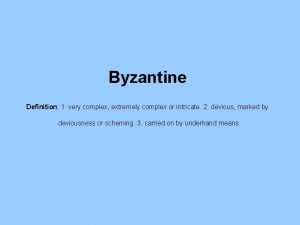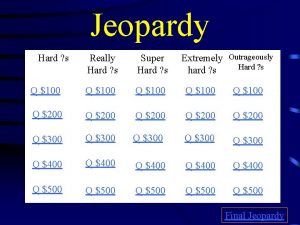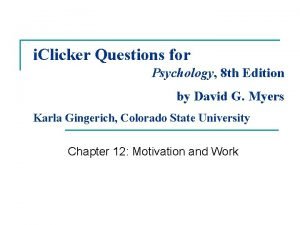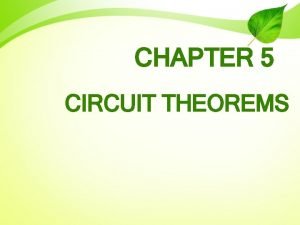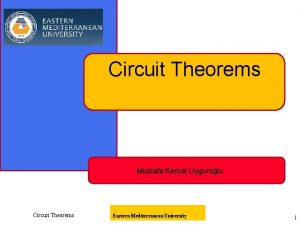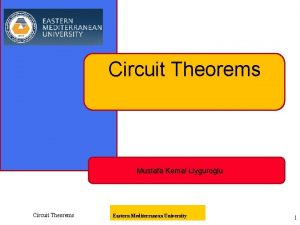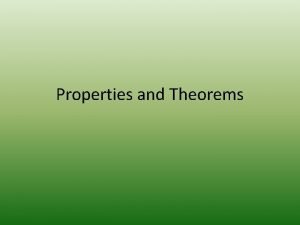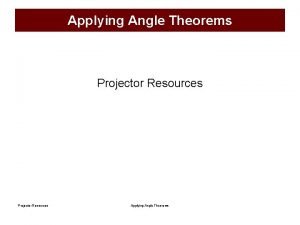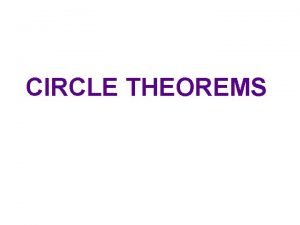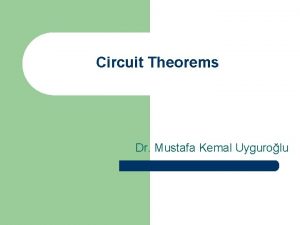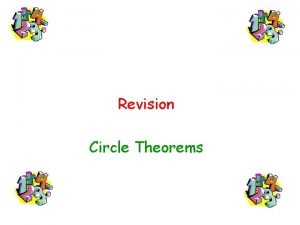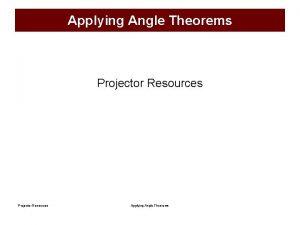Chapter 4 Theorems EXTREMELY important for the AP









![Extreme Value Theorem If f is continuous on a closed interval [a, b] Then Extreme Value Theorem If f is continuous on a closed interval [a, b] Then](https://slidetodoc.com/presentation_image_h2/5567eaf7192965bace6cf9a3b0ca99d5/image-10.jpg)





- Slides: 15

Chapter 4 Theorems EXTREMELY important for the AP Exam

Rolle’s Theorem In the first quadrant, mark “a” and “b” on the x axis. Plot points at f(a) and f(b) such that f(a) = f(b) Connect the two points however you would like but NOT in a horizontal line. What do you notice?

Rolle’s Theorem f(a)=f(b) a b What do you see between a and b on each of these graphs? ?

Rolle’s Theorem Suppose that y = f(x) is continuous at every point of the closed interval [a, b] and differentiable at every point of its interior (a, b). If f(a) = f(b) then there is at least one number c in (a, b) at which f’(c) = 0

Mean Value Theorem This is a more generalized version of Rolle’s Theorem. First stated by Joseph-Louis Lagrange

Mean Value Theorem Suppose that y = f(x) is continuous at every point of the closed interval [a, b] and differentiable at every point of its interior (a, b). There is some point c in (a, b) at which

Mean Value theorem a b

Mean Value Theorem Suppose that y = f(x) is continuous at every point of the closed interval [a, b] and differentiable at every point of its interior (a, b). There is some point c in (a, b) at which

Mean Value theorem a c b
![Extreme Value Theorem If f is continuous on a closed interval a b Then Extreme Value Theorem If f is continuous on a closed interval [a, b] Then](https://slidetodoc.com/presentation_image_h2/5567eaf7192965bace6cf9a3b0ca99d5/image-10.jpg)
Extreme Value Theorem If f is continuous on a closed interval [a, b] Then f attains both an absolute maximum M And an absolute minimum m In [a, b]

Extreme Value Theorem (cont) That is, there are numbers x 1 and x 2 in [a, b] With f(x 1) = m and f(x 2) = M And m ≤ f(x) ≤ M for every other x in [a, b]

y = f(x) M m a b

y = f(x) M m a b

y = f(x) M m a b

 Synonym for extremely important
Synonym for extremely important Example of a news story
Example of a news story Inverted pyramid in news writing
Inverted pyramid in news writing Least important to most important
Least important to most important What is mowaw
What is mowaw Inverted subjects and verbs
Inverted subjects and verbs Cheetahs can run extremely fast because
Cheetahs can run extremely fast because Extremely graphic content
Extremely graphic content Byzantine definition
Byzantine definition Extremely
Extremely Extremely
Extremely Lindsey is extremely afraid of becoming obese
Lindsey is extremely afraid of becoming obese Fspos vägledning för kontinuitetshantering
Fspos vägledning för kontinuitetshantering Typiska novell drag
Typiska novell drag Nationell inriktning för artificiell intelligens
Nationell inriktning för artificiell intelligens Vad står k.r.å.k.a.n för
Vad står k.r.å.k.a.n för








